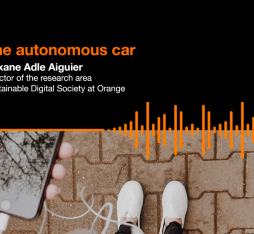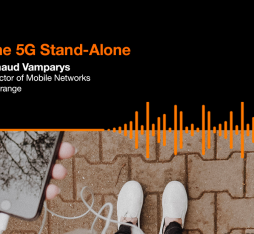“Experiments on the ground have demonstrated remarkable performance potential, with peak throughput exceeding 4 Gb/s.”
Like the previous generations of mobile networks, 5G will eventually deploy across a number of frequency bands. In France, while commercial 5G is most commonly available in the 3.5 GHz band, in future it will be available at frequencies toward the top end of the spectrum, in the so-called millimeter wave (mmWave) range, in particular the 26 GHz band.
From Theory to Practice
Carriers are pondering how the new frequency band will improve the raw performance of 5G in terms of coverage, throughput, latency and associated services. Orange felt that the train station in Rennes, France, would be the ideal testing ground for this and entered into a partnership with SNCF, leading both companies to reflect on what 5G could offer their customers and teams. Meanwhile, France’s electronic communications and postal regulatory authority (Autorité de régulation des communications électroniques et des postes — ARCEP) has launched a special trial platform where licenses for 26 GHz band frequencies are awarded for experimental purposes. In October 2019, ARCEP accepted the project put forward by the Orange, SNCF and Nokia consortium (for network devices). “Our research teams have been studying the features of the 26 GHz band in the lab for some years now,” says Christian Gallard, Project Manager at Orange. “But we needed to test them out on the ground to prove that our previously theoretical observations worked in practice. The 26 GHz band has some surprising features. The higher the frequency band, the less coverage you can provide. But there is greater bandwidth, meaning you can provide higher throughput. Another feature of mmWaves is that they can be blocked by any kind of physical obstacle that stands between the transmitting antenna and the terminal connecting to it.”
Results Beyond Expectations
When it first launched, the experiment focused on performance testing using Sony mobile devices that support 26 GHz. Early testing on the ground revealed outstanding performance, with peak throughput of nearly 1.8 Gb/s. After a software update on the network and some optimization work, the downlink capacity even exceeded 4 Gb/s, and uplink capacity leveled at around 250 Mb/s.
“We also found that this frequency band provided coverage over a wider area than we expected. Despite observing the phenomenon whereby the signal is blocked, it can reach the terminal by bouncing off glass or metal walls. The ANFR, our collaborator on the project, also put in place measures confirming that the exposure levels are well below the limits permitted in France.”
Focus on New Uses
The project subsequently focused on the experience that could be offered with 5G in the 26 GHz band, through service and use-case testing. The service testing involves a device instantly downloading media from a Sony smartphone connected to a server via a mobile application, and multimedia content provided by the startup FastPoint. The future availability of such services to the general public will mean that users can download content instantly before departure when traveling and then view it on board without being connected, so as not to take up bandwidth on the train WiFi network or mobile network near the train lines.
The use-case testing looks at the SNCF business need, focusing on augmented reality for maintenance works. With the help of glasses designed by the Rennes-based company AMA, this system enables a technician working at a self-service terminal can submit a request for remote support. Images captured by the glasses can be transmitted in real time to an expert at the other end of the station who can then superimpose comments or notes on the technician’s field of view in order to guide them. You only have to imagine the scenario at a train station when you’re setting off on vacation, or in a maintenance center that involves a number of technicians all connected to the same network at the same time, and you can see the value of the increased capacity offered by 5G when deployed on the 26 GHz band.
Upgrading the Ecosystem
The experiment taking place at the train station in Rennes is also an opportunity to shape, develop and promote the ecosystem’s stakeholders. There is a trade-off to being awarded these 26 GHz frequencies: those who benefit from it open their platforms up to companies, developers and start-ups, among others, so that they can use them to test their solutions as well. “Over and above all the lessons we are learning from this project, it is also proving to be a successful driver of co-innovation,” says Gallard. “We have even decided to pick up the pace by drafting a new project proposal, this time away from the train station. The aim is to bring this 5G connectivity in the 26 Ghz band to the two SNCF technicentres in Rennes, where we will explore new use cases for local technicians based on Industry 4.0 solutions. From a technical perspective, the first 18 months of experiment have reinforced the idea that the use of the 26 GHz band for 5G would be a valuable add-on for deployment in densely populated areas. Introducing this local connectivity in train stations, airports, stadiums and elsewhere will bring new services to users and provide even more capacity in these highly localized areas with a very high density of network connections.”











